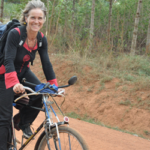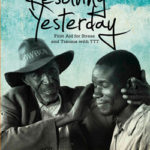We have all experienced stress; in some form it is a survival tool that gives us energy and fuel to handle a pressing situation. Sometimes a stressful situation is so overwhelming that we will do anything to avoid that situation for the rest of our life. In these cases, our security system will code everything in that situation into a script that will trigger a stress response as soon as anything reminds us of it. That stress response will grow stronger as our system generalizes it, to the point where we can generate a full life-or-death panic response by simply thinking about it. It is then called post-traumatic stress.
These responses are there to help us avoid any situation that reminds us, even vaguely, of the original situation. With time, they will become a nuisance in themselves—waking us up with nightmares and flashbacks, causing us to avoid public places that are connected in some way by context or content. They will raise our “baseline” of stress so that we become irritable, aggressive and insecure. Sooner or later these stress levels will generate a higher general production of stress hormones such as cortisol, adrenaline, norepinephrine and dopamine. Out of these, cortisol often leads to somatization—a physical manifestation of symptoms that include problems with digestion, sleep, chronic pain, immune system and memory.
Now imagine a zone of post-conflict, for example Rwanda, where the current levels of PTSD are estimated to affect 28{f4ab6da3d8e6a1663eb812c4a6ddbdbf8dd0d0aad2c33f2e7a181fd91007046e} of the population: over 1.5 million people. How do you address this? It’s not an option to fly in therapists, and parachuting anti-depressants over the countryside can curb the symptoms but won’t reset the responses—they are conditions.
Good news is that there is a solution. This news comes in several levels:
There is a new field of efficient solutions for conditioning stress responses, it is called somatic psychotherapy or sensory exposure therapy.
Trauma Tapping Technique, TTT, is a simple and efficient sensory exposure therapy, designed for these situations as a tool of first aid for laypersons.
- TTT does not require talking about the past
- TTT can give results in as little as one or two sessions
- TTT is designed to be learned by laypersons in less than one hour and passed forward by them to others
- TTT is designed to be spread through multiplication peer-to-peer at the cost of transportation and water
- TTT is empowering, it gives the power of healing symptoms to the survivors
We have written a book about our experiences since 2007, working in Rwanda, Congo, South Sudan, Chad, Sierra Leone, Afghanistan and India. The title is Resolving Yesterday: First Aid for Stress and Trauma with TTT. The book is for laypersons and practitioners alike. We teach it to ex-child-soldiers, women in survivor groups and village workers. You can use it to treat yourself, your family, and add it to your clinical practice and incorporate it into other activities like relaxation, football warm-up or community service.
Our organization is called the Peaceful Heart Network—you can find movies and materials on the website. This is too simple to miss, and for real. Learn it, experience, and pay it forward. Ask your local library and bookstore to order Resolving Yesterday. Like us on Facebook. Donate. Everything you do to let somebody know healing is possible and right at their fingertips helps.
Warmly,
Ulf Sandström and Gunilla Hamne
Peaceful Heart Network—to ease suffering and prevent violence
Resolving Yesterday: First Aid for Stress and Trauma with TTT is available on Amazon, Kindle, and createspace
To watch a video of the TTT process, click here.







